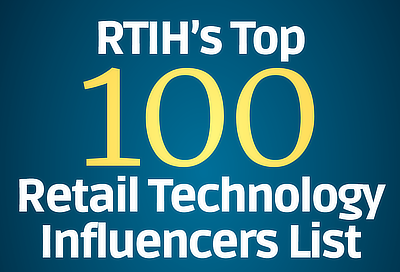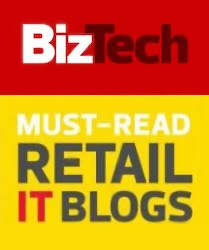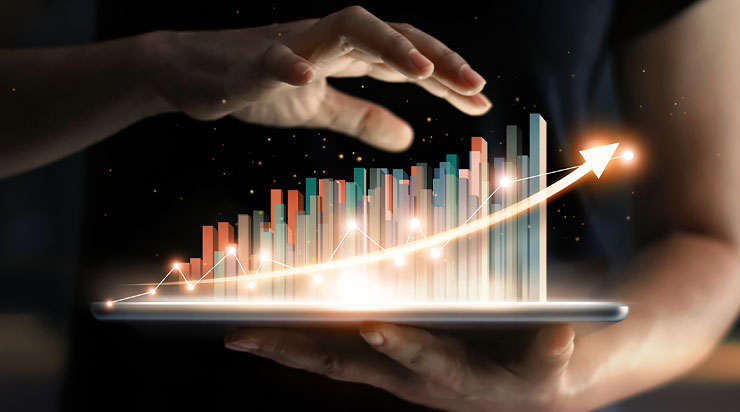Infographics
- February 07, 2021
10 Social Media Trends Every Marketer Should Know in 2021 -Oberlo
From the growing impact of social commerce to the very latest social media marketing strategies, we’ll go deep into the ten social media trends every marketer should know in 2021. -from Oberlo
- January 31, 2021
Global Stars: The Most Innovative Countries, Ranked by Income Group -VisualCapitalist
Innovation can be instrumental to the success of economies, at macro and micro scales. While investment provides powerful fuel for innovation—the relationship isn’t always straightforward. The 2020 ranking from the World Intellectual Property Organization (WIPO) reveals just that. -from VisualCapitalist
- January 24, 2021
10 Shopping Trends That Will Shape Retail in 2021 -Intelligence Node
Intelligence Node conducted a consumer survey, polling over 1000 US shoppers, to analyze the future trends, long term changes, and consumer expectations in the year 2021.
- January 17, 2021
Why Tech Companies Must Quickly Evolve to Stay in the Game -Bain & Company
Technology leaders can easily get knocked off the leaderboard, and recovery is difficult. -from Bain & Company
- January 11, 2021
Prediction Consensus: What the Experts See Coming in 2021 -VisualCapitalist
This year, we more than doubled the number of sources analyzed for our 2021 Predictions Consensus graphic, including outlooks from financial institutions, thought leaders, media outlets, consultancies, and more. Let’s take a closer look at seven of the most popular predictions. -from VisualCapitalist
- January 03, 2021
The Top Surveillance Cities Worldwide -Visual Capitalist
It only took us 79 years to go from one camera to nearly one billion of these devices. China and India are the countries with the highest densities of CCTV surveillance cameras in urban areas. -from VisualCapitalist
- December 27, 2020
Mobile App Statistics You Need to Know in 2020 -infographicjournal
The new decade ushers in the next phase of mobile, with smartphones and smart devices as the primary link that connects us with the world around us. -from infographicjournal.com
- December 20, 2020
How Shoppers Are Spending This Holiday Season -Bain & Company
Retail sales are up as US consumers embrace online shopping and shift spending from travel, restaurants and gasoline. -from Bain & Company
- December 13, 2020
Pandemic Proof: The Most Loved Brands of COVID-19 -VisualCapitalist
Brands that nurture emotional bonds with their customers tend to outperform top companies listed on the S&P 500 and Fortune 500 in both revenue and profit. Not only that, they can also build higher levels of trust, which in turn breeds a more loyal consumer base over time. -from VisualCapitalist
- December 07, 2020
The State of AI in 2020 -McKinsey & Company
The results of this year's McKinsey Global Survey on artificial intelligence (AI) suggest that organizations are using AI as a tool of generating value. Increasingly, that value is coming in the form of revenues. A small contingent of respondents coming from a variety of industries attribute 20% or more of their organizations' earnings before interest and taxes (EBIT) to AI. -from McKinsey & Company
- November 30, 2020
5 Big Picture Trends Being Accelerated by the Pandemic -VisualCapitalist
Screen time is up across the board, with some of the most dramatic increases seen among kids and teenagers. The consumer economy has been innovating on two fronts: making physical buying as “frictionless” as possible, and making e-commerce as nimble as possible. Thousands of people are moving out of pricey urban areas. -from VisualCapitalist
- November 23, 2020
Top 200 most common passwords of the year 2020 -Nordpass.com
- November 16, 2020
China's Double 11 Global Shopping Festival 2020
China's Double 11-day promotion – the world’s largest shopping event – shattered multiple records, as Chinese consumers flocked to homegrown and international brands. This year, the event featured two shopping windows, the first from Nov. 1-3, and the second for 24 hours on Nov. 11 to offer more opportunities for brands and merchants to extend deals to consumers. Total GMV for the event was calculated from Nov. 1-11, and easily beat last year’s $38.4 billion figure. The GMV for U.S. brands taking part was $5.39 billion for the entire shopping period, the largest contribution from a single country or region outside of China. -from Alibabacloud.com
- November 09, 2020
Try Before You Buy: 31% Of Consumers Rent Apparel To Check Out New Brands
Clothes were the most popular rentals, led by formal wear (41%), daytime/work attire (40%) and luxury clothing (33%). Common accessory rentals included handbags (21%), jewelry (16%) and shoes (13%). -from retailtouchpoints.com
- November 01, 2020
The Deadliest Pandemics in History -CEUfast Blog
The COVID-19 pandemic has been a defining time for many people and nations around the world. Here, we took a look at the global pandemic history to see how detrimental each was to the human population. Smallpox has killed more people than any of the other pandemics in history. -from CEUfast BlogPage 12 of 33
















